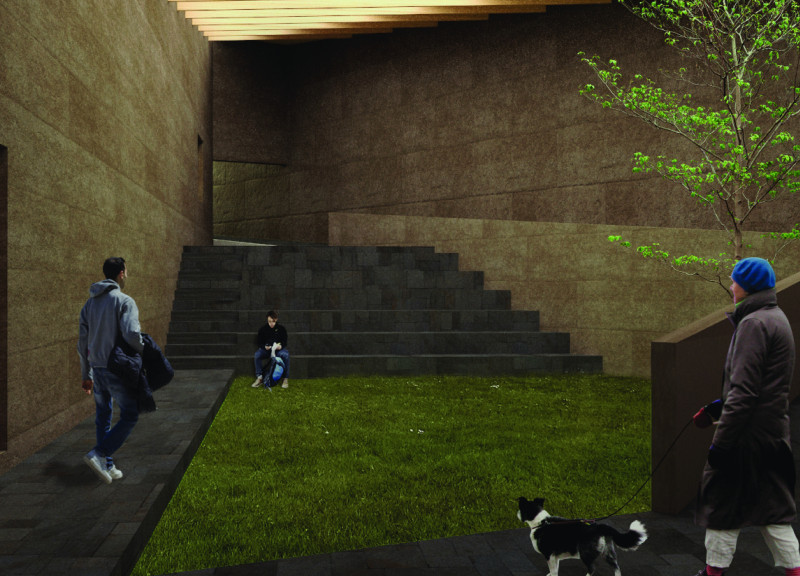5 key facts about this project
At the heart of the design is a multifunctional greenhouse, designed not only as a space for agricultural activities but also as a community hub where individuals can gather, learn, and support local produce. The building's orientation and layout maximize sunlight exposure, crucial for plant growth in the often overcast Icelandic climate. The arrangement of spaces facilitates smooth flows between different functions, minimizing barriers and encouraging interaction among visitors.
Key components of the Northeast Greenhouse include an entry square that serves as a welcoming transition into the facility, offering sheltered space that protects against the region's winds. Adjacent to this, a central atrium acts as a multifunctional gathering space, fostering community interaction and connection. Complementing these areas is a restaurant designed to showcase local ingredients, allowing diners to connect with the region's culinary offerings while enjoying stunning views of the surrounding landscape.
The project’s materiality is a critical aspect that influences both its aesthetic character and functional performance. The use of cross-laminated timber is notable for the roof structure, which not only provides structural integrity but also brings warmth and natural beauty to the interior. The rammed earth walls serve a dual purpose, providing both thermal mass and a tangible connection to the surrounding geology. Translucent roofing materials filter natural light into the greenhouse and atrium, creating a bright and inviting atmosphere that supports both plant growth and human activity.
The design also incorporates vegetated roof systems, enhancing insulation and reducing water runoff while promoting biodiversity. This bioclimatic approach ensures that the design responds effectively to environmental conditions, leveraging natural elements to create an energy-efficient building. By drawing inspiration from traditional Icelandic architecture, particularly the local turf houses, the project respects and references its cultural context. This connection is apparent in the soft, sloping rooflines that mimic the natural topography and provide additional protection against the elements.
Overall, the Northeast Greenhouse reflects a thoughtful integration of architecture and environment, addressing functional requirements while also enhancing community interaction. Its design encourages a sustainable lifestyle by showcasing the relationship between the built environment and natural processes. For a comprehensive understanding of the project's architectural plans, sections, and design ideas, readers are invited to explore the presented materials to gain deeper insights into its significance and implementation. This project serves as a tangible representation of contemporary architectural practices that prioritize ecological sensitivity and community engagement, standing as a model for future designs in similar contexts.


























